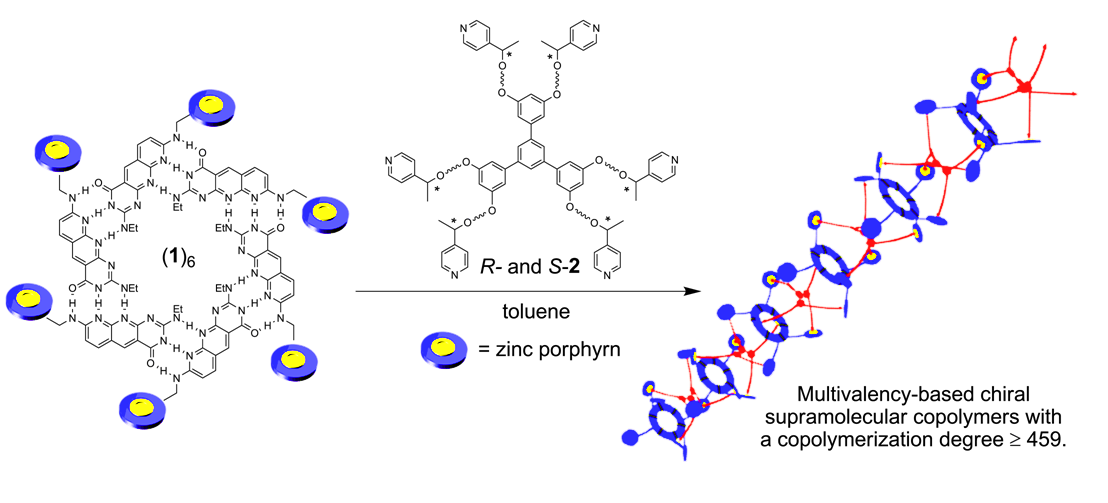In recent years, supramolecular polymers have drawn considerable attention due to their unique features and potential applications in materials science. In contrast to conventional polymers which are made up of covalent bonds and their fabrications are usually processed through polymerization reactions of monomers, in supramolecular polymers, the monomers are connected by non-covalent bonds. Because of the dynamic nature of the non-covalent bonds, supramolecular polymers are always in equilibriums between polymerization and degradation, which endows them unique features such as low-temperature processing, self-healing, and response to external stimuli. For these reasons, supramolecular polymers have been extensively explored as “smart materials”. However, due to the weak binding strength of the non-covalent interactions, the construction of supramolecular polymers with high stability and high molecular-weight is still a great challenge.
Recently, researchers from Shanghai Institute of Organic Chemistry and Peking University developed an efficient approach to construct a novel type of chiral layered supramolecular copolymer with high molecular-weight and high stability (J. Am. Chem. Soc.2011,133, 11124-11127). Inspired by the binding multivalency strategy adopted by nature to construct complicated biomolecules such as DNA, those supramolecular copolymers have been assembled from a hydrogen bonded C6-symmetric zinc porphyrin hexamer and chiral C3-symmetric pyridine hexadentate linkers. The high stability of the new supramolecular copolymers is endowed by the multivalent or cooperative complexation between conventional zinc porphyrin and pyridine units, which further results in strong supramolecular chirality. UV-vis, circular dichroism, and static light scattering experiments revealed that the formation of the layered supramolecular copolymers is at first dynamically controlled and then becomes thermodynamically controlled.

The construction of chiral layered supramolecular copolymer(Image by ZHAO Xin @ SIOC)
This work is generously supported by the National Science Foundation of China, the Ministry of Science and Technology of China, and the Science and Technology Committee of Shanghai Municipality. |


